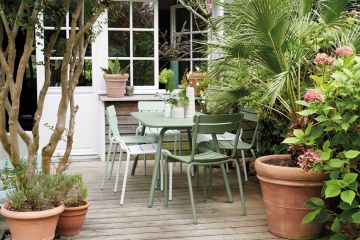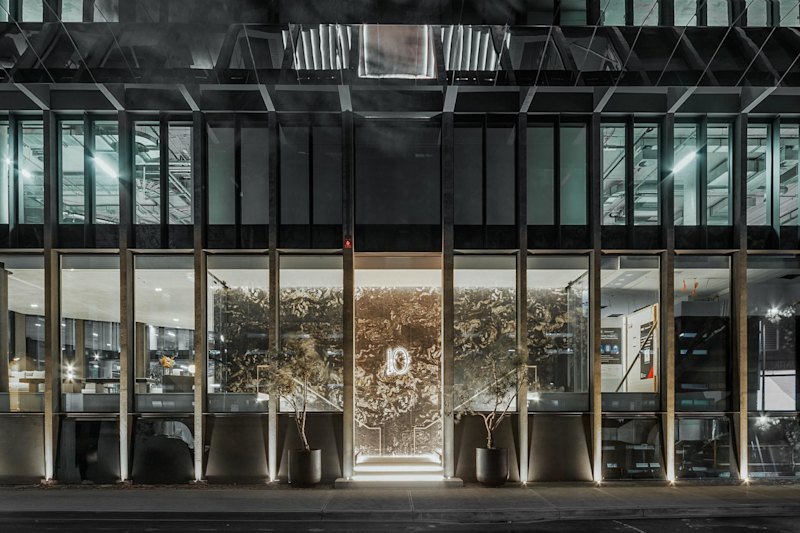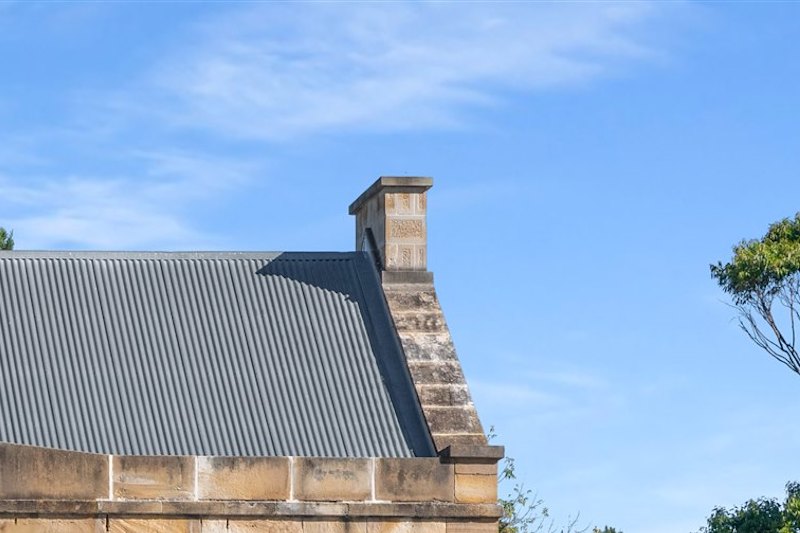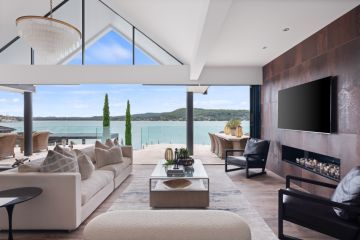14 ways to embrace Hamptons beach style in Australia

Beach-Style Home Exterior photo by Dulux Paint
Author: Robin Braithwaite
In Australia, we have our own unique beach-house style that has evolved over the decades, going from early cottages scattered along our beautiful coastline to contemporary headland homes. While beautiful Hamptons-style beach houses feature heavily in magazines and home design these days, their style isn’t quite ours. We take a look at our laid-back and carefree Aussie beach house and provide some tips on how you can get the look.
Colour it beachy
Aussie beach house colours are usually muted, natural shades of soft grey, sandy yellow, bleached white, pastel green and dusty blue, reflecting their coastal surrounds. Think of the ocean, dune grasses, sun and sand; these should be your inspiration.
Adding chalky white details to windows, doors, pergolas and eaves brings a beachy softness to the exterior of a house. Bring in stronger accent colours with beach towels, pot plants, chairs and even a surfboard.
TIP: Test your colour selection. What looks good on a paint swatch at the local hardware store may look completely different under the harsh Australian sun. Find a large patch of exterior or interior wall to test your colours and view them over several days under different lighting conditions.

Make a neat entrance
Australian beach houses are usually built to accommodate people with active lifestyles. This means a grab it-and-go approach to getting out of the house and on to the beach or into the surf. Putting items near the door is fairly commonplace. Whether working with a narrow hallway or something more grand, Australian beach house homeowners make the most of the entry space by providing a hangers for hats, towels, beach bags and anything else they might need to take with them or conversely ditch as they walk inside.
Reminiscent of the iconic zinc anti-sun cream Australians grew up having plastered all over their faces, beach-style tongue-and-groove panelling painted in chalky white is popular and works particularly well in entrances and down halls, and is very common in Queenslander style homes.
TIP: Add some baskets to store your thongs, sunscreen and fresh towels for a quick trip down to the beach, or to temporarily store those things you don’t want to forget on your next outing.
See the white wall panelling in this Queenslander home project

Add natural touches to living areas
Beach houses traditionally use natural materials and textures to create a beachy style in the main living areas of a home, but there are a few items that are typically Australian. This could be native hardwood tree trunk stools, upholstery with Australian native flora and fauna motifs, such as in the designs of Ink and Spindle, or fine Merino wool throws for cool evenings. Other more generic items include, untreated or recycled floorboards, sisal or jute rugs that can stand up to sand and foot traffic, rustic timbers, bamboo features, textured linens and natural cottons.
Whatever you choose, however, you can’t be too precious about your finishes in the living space of a beach house if you have family to consider. Kids are going to plonk down on the sofa with a wet cossie on, so make sure you can remove the covers or move the furniture into the sun to dry. Go with cane, rattan and natural timbers for your main furniture pieces to keep the look consistent.
TIP: Accessorise in odd numbers with treasures from the sea and beach, and use pops of bright colour alongside more natural tones.

Style up your kitchen
Aussie beach-house living is laid-back and relaxed and this should be reflected in the kitchen. Make yours light, airy and practical with a neutral palette and perhaps incorporated highlights of natural timber for cabinetry. For the walls, it’s as simple as adding slatted cladding with a v-style groove.
TIP: Talk to a local supplier about plumbing fixtures and fittings. The salt and sea air can be really corrosive on some taps and fittings, so stainless steel is generally your best bet.
What’s your kitchen decorating style?
Work your windows
It’s essential that any bedroom facing east has some kind of block-out curtain or blind. And if you’re lucky enough to have views then certainly maximise them, but only during the day. In the summer months you’ll be up at dawn if you don’t block out the rising sun. Plantation shutters add a casual, beachy note and provide the full block-out you’ll need for weekend lie-ins.
TIP: Louvred windows are wonderful for catching the cross breezes and have a laid-back Aussie feel to them.

Create a summery bedroom
A number of Australian designers are producing sumptuous natural linen bedding and accessories, perfect for a relaxed beach-themed room. Scour op-shops and the internet for vintage quilts to add some quirkiness and colour. Or accessorise with acid tones to brighten up a room, just don’t go overboard – choose only one or two items to put against a more natural scheme.
TIP: Beachside markets are a great place to pick up something a little unusual, and often items sold there will be locally made.
Discover a range of stylish bedside tables for your sleeping space

Beautify the bathroom
After a day of beachside fun, there’s nothing better than washing away the salt, sand and sunscreen in a relaxing bathroom.
The temptation these days is to rip everything out and start again. However, if you have vintage pieces in your home, refurbish them rather than replacing. Retro features add to the Aussie beach-house vibe, as many such houses were built in the ’50s and ’60s. So just reglaze and resurface sinks and tubs to freshen up these hardworking pieces.
Natural timber cladding from Australian timbers, combined with rectangular white tiles, lends a natural and relaxed coastal feel to this bathroom, bringing the outdoors in.
TIP: Any timber finishes in this moisture-prone room should be teak or similar to avoid warping or rotting.
Find the perfect bathtub on Houzz
Consider metal cladding
Corrugated iron is quintessentially Australian and can be used to add practical and aesthetic detailing to a house – or even just to a shed, roof or fence. It’s sustainable, lightweight, strong and durable, and has a proud history in Australian coastal architecture.
Incorporate the setting
A simple neutral palette is a winner when it comes to beach houses, particularly those that sit in a lush garden or coastal setting that features plants typical to the area. Let the natural surrounds, plentiful light and blue sky be the heroes of the scheme if you are designing your dream beach house from scratch. Australian architects favour lots of windows (and are particularly fond of louvres – see images 3, 5 and 7) to let in light. And, if you’re lucky enough to have views, they’ll want to open up the space to make the most of them. Lots of glass and multi-purpose bi-fold or sliding doors will bring the natural light in as well as fresh, cooling breezes from the ocean.
Australian native coastal plants
Design a summer servery
Most beach houses in Australia feature a deck or two and often the kitchen flows onto the deck or a paved area.
Some designers let the kitchen bench extend out through a bi-fold or awning-style window to the outdoor entertaining area, creating a kitchen servery. This is a great way to connect the kitchen to the barbecue area, making it easy to pass food and drinks without having to move in and out of the house.
TIP: Adding a servery to an existing kitchen is not as complicated as it sounds, but unless you’re a handy type, the work will involve a tradie, and you may need to talk to your local council.
Shop a wide selection of bar stools
Introduce hardy plants
The beachside garden needs to be stocked with robust plants, able to withstand the coastal elements. Think palms, agaves, yuccas and the iconically Australian beachside pandanus tree. These plants are well suited to full-sun locations.
Native species in particular do wonderfully well in the harsh coastal environment. Add some concrete planters, old lobster pots and some worn and weathered timber or driftwood to enhance the laid-back style.
TIP: Don’t forget garden lighting to create inviting outdoor ambience. Use soft up-lights to accentuate trees, floor lights to see where you’re going and downlights to see what you’re doing.
More ideas for garden lighting
Stow it away
Beachside living can involve lots of toys and gadgets, and they all need a home. Make sure you have ample storage for your boards, wetsuits, goggles, snorkels, buckets and spades, beach umbrellas and bikes.
This can be as simple as a rack hidden away under an eave, or as sophisticated as a weather-proof shed complete with shelves to store board wax and sunscreen, along with hooks and rails to hang towels, wetsuits and more.
TIP: Position the storage near a water source so you can rinse down boards and store them straight away. The storage should also be easily accessible from the street and not just via the house.
Hook up an outdoor shower
Nothing screams ‘I’m at the beach!’ more than throwing your towel onto a hook and rinsing the sand off under an outdoor shower. It’s a really practical idea too – who needs to be sweeping up sand when it can be easily rinsed off outside?
TIP: Make sure you can access the outdoor shower from the street. If you don’t have side or rear entry to your home, the shower will need to be out the front or you’ll still be trekking sand through the house.
Invest in stylish outdoor living
The trend for outdoor entertaining is never more apparent than when you’re at a beach house. Although there isn’t a lot of difference between Australian decor for outdoor entertaining areas and those in other Western countries, there is a certain colour and style made famous overseas by Australian landscape designer Jamie Durie that incorporates some of the elements of our own region of south-east Asia into the generally laid-back look.
The requirements for hosting friends and family for an alfresco meal can be as simple as a barbecue and an outdoor dining setting, or a more extravagant outdoor kitchen and entertaining area, complete with fully stocked bar. Whatever you choose, just make sure the furniture is comfortable, durable and weather-proof.
TIP: Install an outdoor fridge so that refreshments are close at hand, and choose a barbecue that can withstand the corrosive nature of salt air – look for stainless steel.
We recommend
We thought you might like
States
Capital Cities
Capital Cities - Rentals
Popular Areas
Allhomes
More







